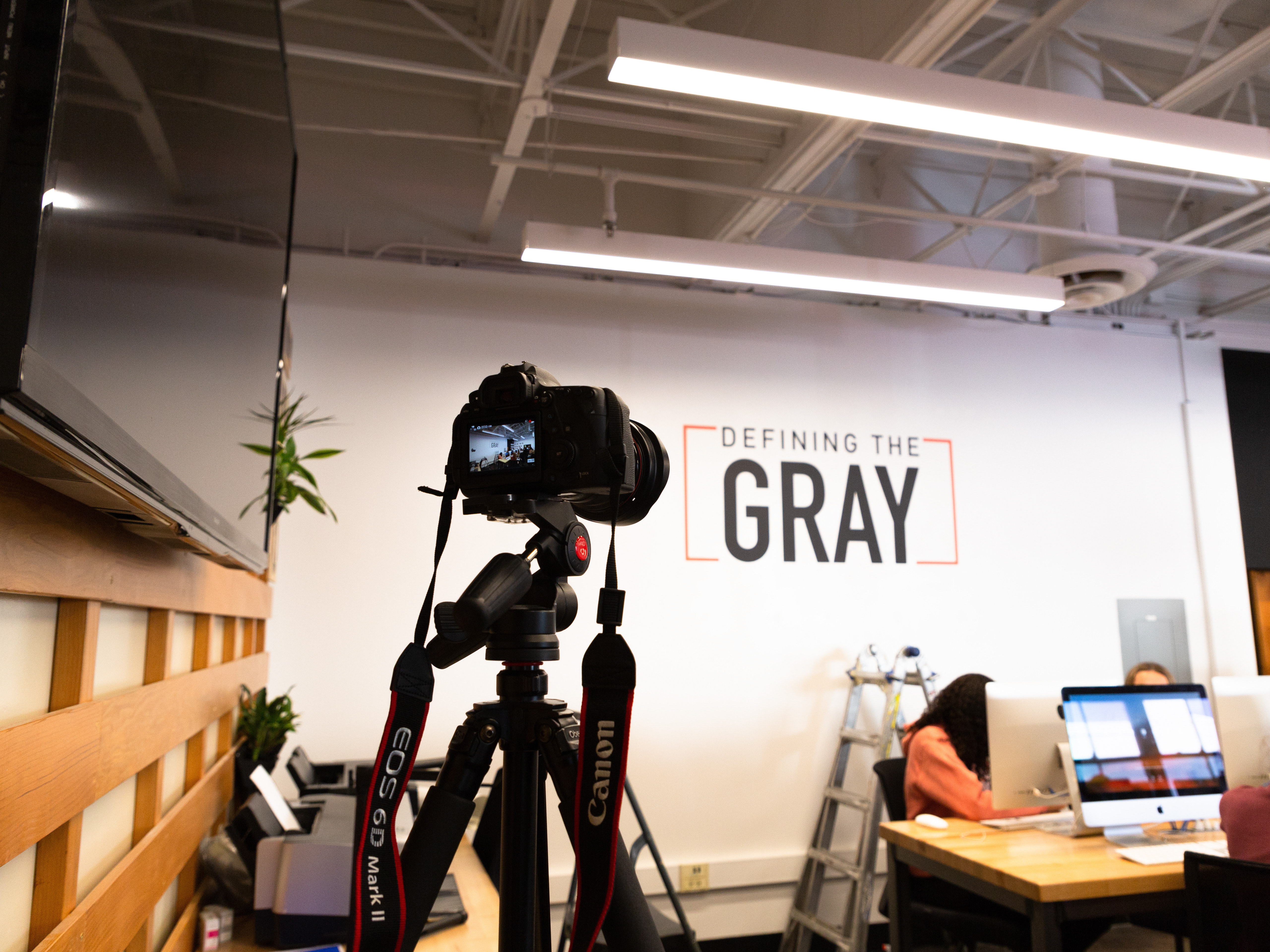Overview
Author and innovator George Couros kicked off the 2022 school year by speaking to our staff about the importance of focusing on student empowerment. He made a great case for his argument and many in the audience were convinced.
BUT…
Do our students already feel empowered? How can we tell?
And what can we do to promote or develop empowerment in our learners?
Those details were not included in the presentation and where the real work began.
I worked with a small team to design a research project that would help us gather critical information from our students to help us better understand our current situation as well as develop actionable ideas geared toward improvement.
The Problem
For years, we have known that the longer students are in school, the less engaged they become. Efforts have been made to increase student engagement without fully understanding the underlying causes of this decline. In addition, very little research has been done to measure and/or increase the sense of empowerment students feel while in school.
This research project was designed to examine the student experience in high school and discover the factors that impact a positive and meaningful learning environment. Covid exposed numerous issues that had been building for years.
Severe teen mental health issues, a decreasing level of student engagement, and rapidly increasing educational technology expenditures are all a major part of the American high school system currently.
The Process
Goals
Uncover pain points for students that inhibit their learning experience and reduce their sense of empowerment as they move closer to graduation.
Identify positive and empowering areas of the student experience that can be implemented at scale throughout the system.
Identify positive and empowering areas of the student experience that can be implemented at scale throughout the system.
Plan
We needed to discover what we didn’t know so we determined that we needed to speak directly to students about this topic. We created a moderator’s guide with a list of research questions focused on three main areas:
• How does a sense of belonging contribute to a student’s academic experience and performance?
• What role does technology play in empowering student learning and engagement?
• How does choice and opportunity affect a student’s sense of empowerment?
• What role does technology play in empowering student learning and engagement?
• How does choice and opportunity affect a student’s sense of empowerment?
Identify
Working with the Assistant Principal of Curriculum, the guidance specialists, and our intervention specialist we compiled a list of students to interview that provided a solid representation of different academic ability as well as involvement in extracurricular activities.
We identified three categories of students we wanted to hear from:
1. Advanced Placement (AP)- High Academic Achievers (4.2+ GPA)
2. College Prep (CP) Average Academic Students with High Levels of Involvement (2 or more extracurriculars)
3. Intervention (MTSS) Students failing 2 or more classes
We interviewed 6 students in the first round. 2 students from each of the categories identified above. The interviews were videotaped and lasted between 30-45 minutes.
Analysis and Adjustments
After the first 6 interviews, the team discussed initial findings and trends. We updated the moderator’s guide to eliminate a couple vague questions and 1 that none of the original 6 had an answer for.
We also modified or added questions to help gain more clarification on areas that stood out during the first round but we did not have enough information on yet.
Updated Questions
• Can you tell me about any leadership opportunities you had in your classes? Any opportunities to lead other students or work on projects that involved working with others to accomplish a common goal?
• Please describe any experiences or examples where a class improved your confidence level as an individual?
• How is your use of technology for school similar or different to how you use it for other purposes (personal, work, etc.)
• What obstacles or reasons stop you from specifically choosing more of your classes?
• What is most important to you when you are selecting which classes to take?
Mapping the Experience
After conducting the second round of interviews with three more students in the same setting as before but with a slightly modified list of questions, each team member watched the recorded interview and added to their original notes.
We then collaborated to create journey maps to highlight the critical student experience elements we were discovering. This helped to clearly show the highs and lows throughout the day and directly connect those moments to the physical setting and experience.
The Results
Findings
#1- Accessibility
People first. Content second. Students learn best and are most motivated when they know they are cared about. Safer environments promote questions and discussions needed for meaningful learning.
“My relationship with the teacher is everything.”
-P8
• 7 out of 9 felt a sense of belonging at school
• 5 students attributed their sense of belonging to extracurricular activities instead of the classroom/teacher
• A personal relationship with the teacher was critical to the learning experience for 8 of 9 interviewed
#2- Relevance
The more students can see their learning and share their learning with others, the more empowered and motivated they are to produce quality work. Authentic audiences and real problems lead to inspired solutions.
“I really love making other people feel good so I love working on projects that can have that kind of impact.”
-P2
• 3 students felt that had been assigned projects that they felt they will use in the future and were proud of
• Only 1 student preferred creating projects with technology compared to physical products
• 2 out of 9 felt technology was adding to their learning experience rather than just helping them complete assignments
#3- Choice
On average, students only choose 3-4 classes throughout their high school experience but those ones tend to have the biggest impact on them and help them feel connected to school.
“I know I want to be an engineer when I get older. Taking a class where I get to build things makes me know I am on the right track.”
-P1
• 7 out of 9 students felt they had little to no choice when it came to choosing classes
• A network of peers increases motivation and willingness to ask for help (6 out of 9)
• All students named a class they specifically chose as their favorite one
* Increased choice was associated with older grade levels
Recommendations
Based on the findings from this research project, we presented the following list of recommendations to school and district leaders as a starting point to increase the levels of student empowerment on campus:
1. Prioritize relationship building for the first two weeks of schools to demonstrate to students that they are more important than the curriculum.
2. Develop hybrid, online, and/or team teaching working schedules for teachers to enable them to be available for students during non-traditional times
3. Provide more staff training on technology usage with students. Focus on tech usage that frees up time and space for experiential learning.
4. Engage with the community to foster projects that help students work with organizations and businesses to gain exposure to different career paths while producing work that means something beyond a letter grade.
5. Provide more resources and support to help students to choose course options so they are empowered to craft a learning experience designed around their personal goals.
6. Create additional courses in the core academic classes that feel like elective courses but satisfy required credits. Emphasize project-based learning that requires students to develop solutions for real world problems.
Lessons Learned
Moderators: In 5 of the 9 interviews, only one moderator was present. We discovered that the students were more comfortable and open with 2 moderators which came as somewhat of a surprise. After reviewing the recordings, it was apparent that multiple moderators created a more conversational tone as opposed to a structured interview. Note-taking when there was only one moderator seemed to make the students more hesitant to open up during the interview.
Different but the Same: We were surprised by how similar the responses were among the students from all three groups. Although their academic achievement and level of involvement differed, their overall view and experience of school was largely the same. Compliance and/or consequences appear to make a larger impact than empowerment, which none of the 9 students claimed to feel in school.
More Voices: More research is needed with additional groups in order to further develop this project and create actionable ideas to address the issue of student empowerment. The next step will be to conduct interviews with teachers, administrators, and parents to help develop a more comprehensive understanding of student empowerment in school.


